Entertainment
Spotlight on AI-Generated Music Trends and Hits in 2025 Now
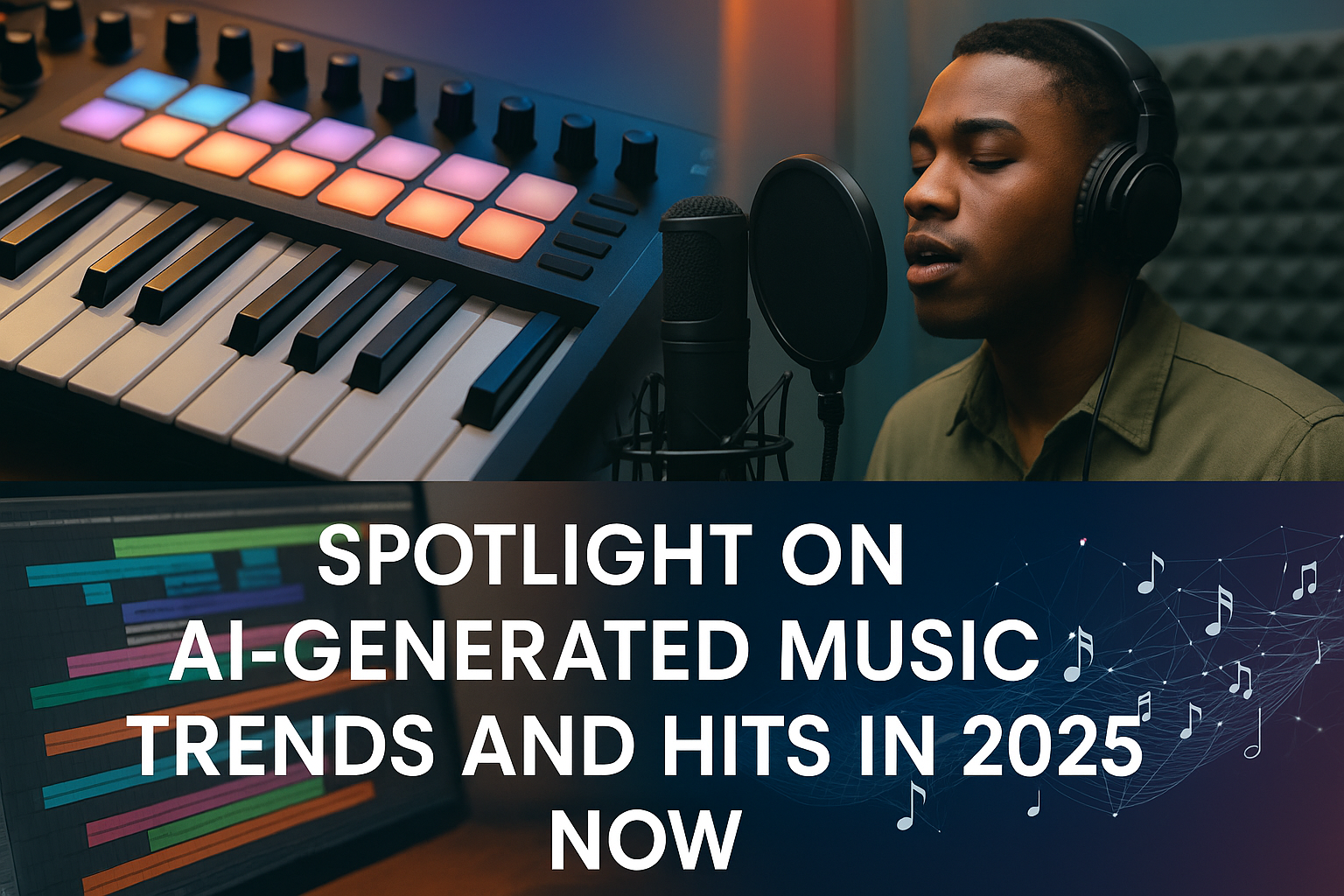
Introduction
Music is changing fast thanks to artificial intelligence. In 2025, AI-generated music is no longer a novelty. It is topping charts, inspiring new genres, and making it easy for anyone to compose songs. From algorithms that adapt tracks to your mood to virtual artists who publish hits, AI is reshaping the music world. In this article, we shine a spotlight on AI-generated music trends and the biggest AI hits of 2025. We explain what AI music is, review top trends, highlight breakthrough songs, and offer tips for both creators and listeners. By the end, you will see how AI will keep changing how we make and enjoy music.
What is AI-Generated Music?

Image by: Yandex.com
AI-generated music uses software and algorithms to compose, arrange, and sometimes perform songs without direct human writing of each note. These systems learn from vast libraries of existing music. They spot patterns in melody, rhythm, harmony, and production. Then they create new pieces that follow those patterns or blend styles in fresh ways.
AI music tools range from simple beat makers to advanced neural networks that write complete symphonies. At the basic level, you can ask an AI to produce a drum pattern or chord progression. More advanced platforms accept text prompts like “create a chill pop track in the style of the 1980s.” The AI then generates a full demo with drums, bass, synths, and melody.
How AI Music Works
Behind the scenes, AI music systems use machine learning models. These models process thousands of hours of music recordings. They learn features like tempo, key, and timbre. Once trained, the model can mix and match these features in new combinations. Some systems also use reinforcement learning. They try drafts, evaluate which ones sound best, and refine future outputs. This process mimics how human composers experiment, but it happens much faster.
Rise of AI Music in 2025
In the early 2020s, AI music was a side project for hobbyists and tech labs. By 2025, major labels and streaming services have fully embraced AI. Many top hits feature at least some AI-produced elements, from beats to vocal tuning. Key factors behind this rise include improved AI models, faster cloud computing, and the demand for fresh content.
AI music startups now number in the hundreds worldwide. They offer tools for producers, podcasters, and even game developers. Integration with popular digital audio workstations (DAWs) means that AI features are just a click away. As a result, even small artists and indie creators can produce polished tracks without a big studio budget.
Streaming platforms also use AI to generate personalized tracks. Services learn each listener’s tastes and mix songs on the fly. These “smart playlists” often include AI-generated transitions and bridges, creating a seamless listening experience. As a result, listeners stay engaged longer and discover new AI-crafted songs.
Top AI Music Trends in 2025
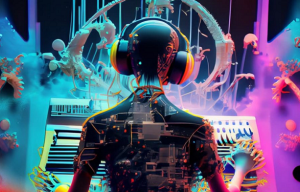
Image by: Yandex.com
The following trends show how AI-generated music is evolving. Each trend highlights a new way creators and listeners use AI to shape music.
Personalized AI Playlists
AI now creates playlists that adapt in real time to your mood and activity. Instead of static lists, your personalized soundtrack changes as you walk, exercise, or work. AI tools analyze your heart rate, location, and time of day. They then pick or even compose tracks that fit your energy level. This makes listening more immersive and keeps you motivated during workouts or focused during study sessions.
AI Collaborations with Human Artists
In 2025, many top songs feature joint credits between human singers and AI “virtual artists.” These digital collaborators offer unique vocals or production styles. A producer might ask the AI to generate a vocal riff or harmony supporting a live singer. Or the AI might write an instrumental bridge that feels unlike anything a human might produce. This partnership lets artists push creative boundaries and deliver fresh sounds to fans.
Real-Time AI Live Mixes
Live concerts now feature AI that remixes the performance on the spot. As a band plays, AI listens and adjusts the mix, adding beats, loops, or effects in real time. Fans at home can choose different mix versions via an app, such as drum-heavy or vocal-forward. This trend brings interactive live experiences that feel more like video games than concerts.
AI-Driven Genre Fusion
AI’s pattern-finding skills help it blend styles in ways humans might not imagine. In 2025, genre-blending tracks mix classical strings with trap beats or folk vocals with techno synths. AI models trained on multiple genres can merge their features smoothly. As a result, we see new subgenres emerge faster than ever, keeping the music scene fresh and unpredictable.
Emotionally Adaptive Soundtracks
In film, gaming, and even retail spaces, AI now creates soundtracks that adapt to viewers’ or customers’ emotions. By tracking facial expressions or purchase behavior, the system alters the background music to match the mood. If a movie scene looks tense, the AI adds more suspenseful music. If a shopper seems bored, the in-store playlist shifts to something more upbeat. This emotional AI scoring trend will expand in 2025, offering tailored audio for any context.
Breakthrough AI-Generated Hits of 2025

Image by: Yandex.com
Several AI-backed tracks broke into mainstream charts in 2025. These songs show the power and diversity of AI music.
“Digital Heartbeat” by AI Duo PulseCore
“Digital Heartbeat” reached the top 10 on global streaming charts. PulseCore, a team of two human DJs and one AI producer, went viral with the track. The AI crafted the bassline and glitch effects, while the DJs added vocals and live drums. Listeners praised the fresh sound that felt both futuristic and danceable.
“Neon Dreams” by Virtual Composer Aurora
Aurora is an AI composer brand that releases a new single every month. “Neon Dreams” blends 80s synthwave with modern pop. Aurora’s model analyzed decades of chart hits to nail the catchy hooks. The track’s official video, fully AI-rendered, now has hundreds of millions of views, proving that AI acts as both musician and visual artist.
“Echoes of Tomorrow” by AI Collective Zenith
Zenith is a collective of indie musicians using AI to co-compose songs. “Echoes of Tomorrow” features a haunting flute melody generated by AI and layered with live electric guitar. The song topped indie charts and earned praise for its organic feel. Fans noted that they could not tell which parts were human or machine-made.
How AI Tools are Shaping Music Creation
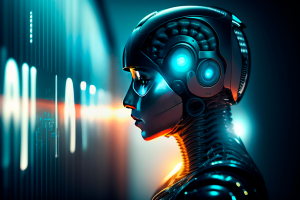
Image by: Yandex.com
AI music creation tools come in many forms. Some focus on composition, others on sound design. Here are ways creators use AI today.
AI Composition Assistants
Tools like SongForge and MelodyMojo suggest chord progressions and melodies as you work. You can accept or tweak the suggestions. This speed-up helps songwriters move past write-block and explore new directions.
AI Vocal Generators
Services like VocalSynth AI can generate lifelike singing voices. You type lyrics and specify style, and the AI sings them in a chosen voice. This lets producers draft demos without booking studio singers.
AI Mixing and Mastering
Platforms such as MixMate use AI to balance levels, apply EQ, and add compression. They learn from mixes of hit records to deliver professional-quality sound. This reduces the need for expensive engineers for basic projects.
AI Sampling and Sound Design
AI sample libraries like SoundAI use machine learning to classify and tag thousands of samples. Producers can quickly find the perfect drum hit or synth stab. Some tools even generate new samples on demand by morphing existing sounds.
Table: Comparison of Leading AI Music Tools
| Tool Name | Main Feature | Best For | Pricing Model |
|---|---|---|---|
| SongForge | Melody and chord suggestions | Songwriting drafts | Subscription-based |
| VocalSynth AI | AI-generated vocals | Vocal demos and sketches | Pay-per-song |
| MixMate | Automated mixing/mastering | Quick project finalization | Tiered monthly plans |
| SoundAI | AI sample generation | Custom sound design | Credits-based purchase |
| Aurora Composer | Full track generation | Ambient and synthwave tracks | Free & premium versions |
Conclusion
AI-generated music has leapt from a niche experiment to mainstream success in 2025. Trends like personalized AI playlists, human-AI collaborations, and real-time live mixes show the technology’s vast potential. Breakthrough tracks such as “Digital Heartbeat” and “Neon Dreams” top charts and spark fresh genres. Tools like SongForge and MixMate help both pros and hobbyists bring ideas to life. Yet ethical and legal questions on ownership and artist pay remain. As AI music evolves, listeners and creators must stay curious, informed, and creative. The future holds deeper emotion, interactive shows, and wider access to musical creation.
Call-to-Action:
Ready to explore AI-generated music? Check out an AI playlist now or try a free demo of an AI composition tool. Embrace the sound of the future today!
Entertainment
Drift Hunters: The Quiet Art of Losing Control Gracefully

Introduction
Some driving games are built around competition. They push you to beat opponents, chase first place, or dominate leaderboards. Drift Hunters is not one of those games. Instead, it invites you into a quieter, more reflective world a place where drifting becomes an introspective practice, something closer to meditation than racing. There is no pressure, no aggressive AI, no frantic countdown. There is just you, your car, and the constant dance between grip and release.
What makes Drift Hunters so fascinating?
This is the way it slows you down mentally even as your car slides across the pavement. The moment the rear tires break loose, the world narrows into a single flow of motion. Everything unnecessary falls away: the noise in your head, the rush of your day, the clutter of responsibilities. You begin to feel the rhythm of the drift a subtle cycle of acceleration and correction, of commitment and uncertainty. In those moments, drifting becomes not just a mechanic but a breathing pattern.
Every map is designed to enhance this sense of calm focus. Open spaces let you experiment freely, without consequence. Long industrial stretches become extended thought corridors where you can settle into slow, deliberate drifts. Mountain roads challenge your concentration, forcing you to treat each corner like a fragile moment you must handle with care. The game never shouts at you. It gently shapes your awareness, guiding you toward a deeper understanding of how cars move and how your hands respond.
Drift Hunters feels more like adjusting
Then there’s the tuning. It may appear technical on the surface, but tuning in Drift Hunters feels more like adjusting a musical instrument than tweaking machinery. A small shift in suspension softness can transform a car from anxious to patient. A change in brake bias alters its emotional vocabulary. And as you experiment, you begin to craft a driving style that feels personal a reflection of your temperament. Are you bold, constantly pushing the rear end outward? Or cautious, preferring controlled slides and smooth transitions? The game doesn’t judge. It simply presents the tools and lets you discover yourself through trial and error.
Because of this, Drift Hunters becomes a space where improvement feels natural and unforced. You’re not grinding for rewards you’re refining your technique because the process itself is satisfying. The longer you play, the more you learn to appreciate the subtleties: the precise moment when weight transfers, the way a drift lengthens when throttle and steering find harmony, the strange sense of peace that comes from maintaining a long, uninterrupted slide. These experiences aren’t about spectacle; they’re about presence.
It gives you breathing room
And maybe that’s why Drift Hunters resonates with so many players. It doesn’t overwhelm you with features or gimmicks. It gives you breathing room a space to explore motion at your own pace, without judgment or noise. In a world where so many games demand constant attention and urgency, Drift Hunters offers something rare: the freedom to drift not because you must, but because it feels good to let go for a moment and trust the motion.
By the time you exit the game, you find that something has shifted. Your reflexes feel tuned, your thoughts feel clearer, and you’re left with a sense of quiet satisfaction. Drift Hunters doesn’t just teach you how to drift; it teaches you how to appreciate the fragile balance between control and surrender, both inside the game and in your own life.
What makes Drift Hunters feel different is how personal the journey becomes. Every car you tune starts to reflect you your habits, your struggles, your evolution. You might favor smooth, predictable setups with gentle suspension and balanced grip, or you might chase aggression with stiff springs, sharp angles, and turbo pressure cranked far beyond comfort. The tuning system doesn’t just give you options; it gives you identity. Your car becomes a mirror, showing exactly how far you’ve come since those first awkward drifts.
Drifting isn’t about perfection
And the deeper you go, the more you realize something unexpected: drifting isn’t about perfection. It’s about expression. No one drifts exactly the same way as someone else, and Drift Hunters embraces that endlessly. A perfect drift isn’t clean it’s honest. It carries your mistakes, your corrections, your instinctive decisions made in fractions of seconds. It feels alive because it’s shaped by the person holding the wheel.
That’s why Drift Hunters stays with people long after they close the game. It’s not just a driving experience it’s a memory maker. It gives you stories: the time you kept a combo alive for minutes without breaking; the run where everything clicked and the car flowed like water; the night you tuned a setup so dialed-in that even mistakes felt intentional. These are the chapters that players carry with them, retelling them the same way someone might describe an unforgettable trip or a first breakthrough.
Drift Hunters doesn’t push you to win. It invites you to improve, to grow, to enjoy the journey from novice to master a journey where your only real opponent is who you were the last time you drove. And with every session, every adjustment, every drift that carries longer than you thought possible, you realize the deeper truth: this is a game that lets you build a story only you can write.
Entertainment
What Is IPTV and Why More People Are Switching from Cable TV?
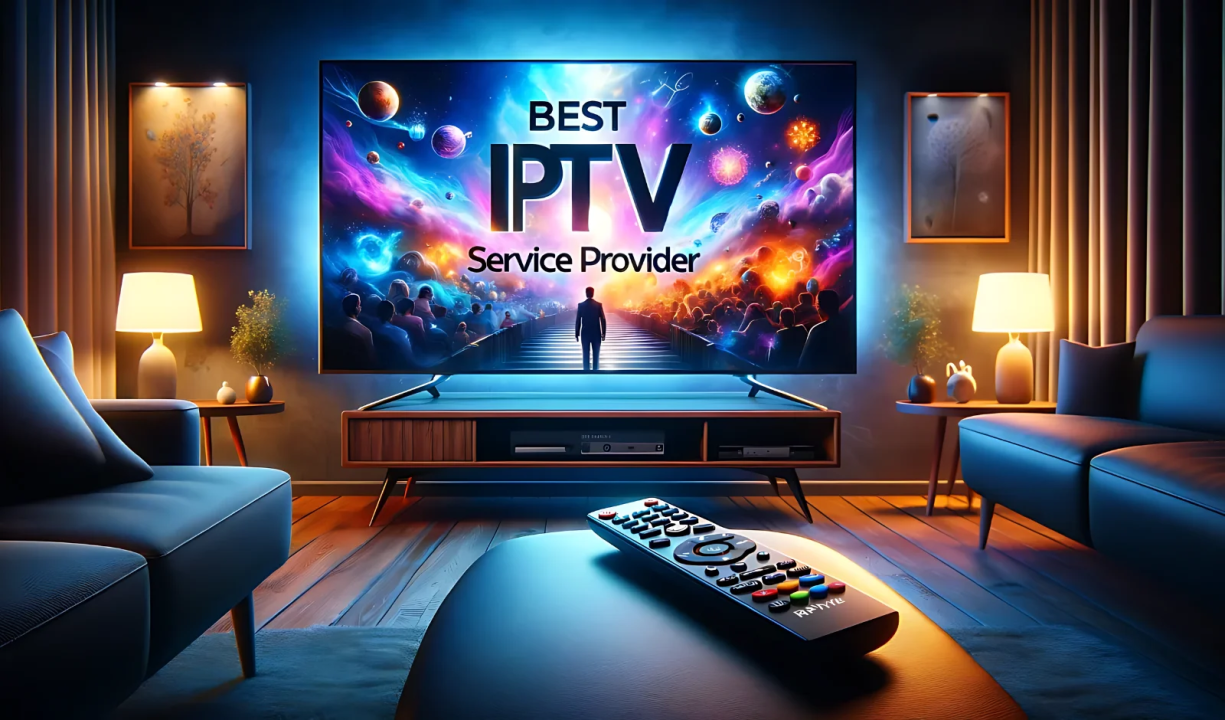
Introduction
In the ever-evolving world of entertainment, more and more people are moving away from traditional cable TV in favor of IPTV. If you’re wondering what IPTV is and why it’s gaining popularity, you’re in the right place. IPTV stands for Internet Protocol Television, and it’s revolutionizing the way we watch TV.
In this article, we’ll dive into what IPTV is, how it works, and why more people are ditching their cable subscriptions in favor of this innovative service. Whether you’re looking for better convenience, a wider variety of content, or simply a more affordable option, IPTV could be the future of your entertainment setup.
What Is IPTV?
IPTV stands for Internet Protocol Television. Instead of receiving TV channels through traditional satellite, antennas, or cable systems, IPTV delivers television content over the internet. This means shows, movies, and live broadcasts are streamed as data directly to your devices.
IPTV, or Internet Protocol Television, is a system that allows you to stream television shows and movies over the internet rather than through traditional cable or satellite methods. Instead of receiving your TV signals via radio waves or cables, IPTV uses an internet connection to deliver content directly to your TV, smartphone, or other connected devices.
The major difference between IPTV and traditional cable TV is that IPTV offers on-demand streaming and access to content over the internet. This allows users to watch live TV, movies, sports events, and shows at any time, without the limitations of traditional broadcast schedules. In a nutshell, IPTV provides flexibility and choice in how you consume television.
IPTV can include:
- Live TV: Watch channels in real time, just like cable.
- Video on Demand (VOD): Choose movies or shows to watch whenever you want.
- Time-shifted TV: Pause, rewind, or catch up on shows you missed.
How Does IPTV Work?
Unlike traditional TV that relies on signals from satellite dishes or coaxial cables, IPTV uses your internet connection to deliver content. The process works like this:
- Content Source: Broadcasters provide a live stream or library of shows.
- Encoding & Transmission: Content is converted into digital format and sent over the internet.
- Middleware: A platform organizes channels, subscriptions, and guides.
- Devices: Viewers access the content through apps on smart TVs, phones, tablets, set-top boxes, or computers.
Types of IPTV Services
- Live IPTV: Streams live TV channels online.
- Video on Demand (VOD): Offers movies and series anytime.
- Catch-up TV: Lets you rewatch missed shows.
- Hybrid IPTV: Combines live channels, on-demand libraries, and interactive features.
Benefits of IPTV Over Traditional Cable TV

Image by: Yandex.com
1. Cost-Effective Solution
One of the major reasons people are switching to IPTV is the cost savings. Traditional cable TV packages often come with high monthly fees and additional charges for premium channels or equipment rentals. With IPTV, many providers offer affordable subscription models that allow users to pick and choose the channels or packages they want, often at a fraction of the cost of cable TV.
IPTV services often come with no hidden fees, and many providers offer bundled services that include additional features like on-demand content, cloud storage, or even internet and phone services at a reduced rate.
2. Flexibility and Convenience
Another huge benefit of IPTV is the flexibility it provides. With IPTV, you can watch your favorite shows and movies from almost any device – be it a smartphone, tablet, laptop, or smart TV. Unlike cable TV, which requires a dedicated cable box connected to your TV, IPTV allows you to watch content from multiple screens simultaneously.
Additionally, many IPTV services offer features like catch-up TV, where you can watch shows that aired in the past week or month, and cloud DVR, allowing you to record shows and access them from anywhere.
3. Wide Selection of Channels and Content
IPTV provides access to a much broader range of content than traditional cable. Along with the typical broadcast channels, IPTV services often include access to international channels, niche content, and specialized programs.
For those who enjoy specific genres or regional content, IPTV offers a great way to explore a diverse library of entertainment options that traditional cable may not provide.
4. No Long-Term Contracts
One of the most appealing aspects of IPTV is the lack of long-term contracts. Unlike cable companies that often lock you into yearly contracts, IPTV providers typically offer monthly subscription plans, which means you have the freedom to cancel or switch services whenever you want.
This flexibility is particularly valuable for people who don’t want to be tied down by long-term commitments or hidden fees.
5. Better Picture and Sound Quality
With an internet-based service, IPTV offers superior picture and sound quality, often surpassing traditional cable. Because it is digital, IPTV providers can offer HD and 4K resolution, resulting in a clearer picture and richer sound. For those who prioritize visuals and audio, this can make a big difference in your overall viewing experience.
Why People Are Switching from Cable to IPTV
- Flexibility & Personalization: With IPTV, viewers can select only the channels or services they want, instead of paying for large cable bundles.
- On-Demand Viewing: People prefer watching shows on their own schedule. IPTV makes binge-watching and catch-up simple.
- Multi-Device Access: IPTV works on multiple devices—TVs, tablets, phones, and laptops—without the need for extra cable boxes.
- Lower Costs: Cable subscriptions have become expensive. IPTV and streaming often provide cheaper, more flexible options.
- Global & Niche Content: IPTV services often include international channels and specialty content not usually available on cable.
- Better Features: Pause live TV, rewind, record to the cloud, get personalized recommendations, and enjoy interactive apps.
Advantages of IPTV Over Cable
- Personalized packages and more content choice
- On-demand viewing and cloud recording
- Access across multiple devices
- Potential for higher quality streaming (HD/4K) with good internet
- Faster updates and modern features compared to cable
Things to Watch Out For
- Internet Dependence: A stable, fast internet connection is required. Weak connections cause buffering.
- Latency Issues: Live events may have slight delays compared to cable.
- Illegal Providers: Some IPTV services are not licensed. They can expose users to legal risks, scams, or malware.
- Fragmentation: To access all shows and sports, you may need multiple subscriptions.
Choosing a Reliable IPTV Provider
- Pick trusted providers with legal rights to broadcast content.
- Check customer reviews about stability and quality.
- Test trial periods before subscribing.
- Ensure your internet is fast enough (especially for HD/4K).
- Avoid unverified apps or suspiciously cheap offers.
The Future of Television
The television industry is shifting. Traditional cable subscriptions continue to decline, while IPTV and streaming are gaining popularity worldwide. With more people prioritizing flexibility, affordability, and on-demand access, IPTV is quickly becoming the preferred way to watch TV.
Conclusion
IPTV is not just a trend it’s the natural evolution of television. By offering more freedom, global content, and interactive features, IPTV is redefining how people consume entertainment. While cable TV still has its place, the convenience and advantages of IPTV explain why so many households are making the switch.
If you are looking for iptv, we recommand you to check : best subsctiption iptv service provider .
Entertainment
Why Travelers Still Love Offline Entertainment
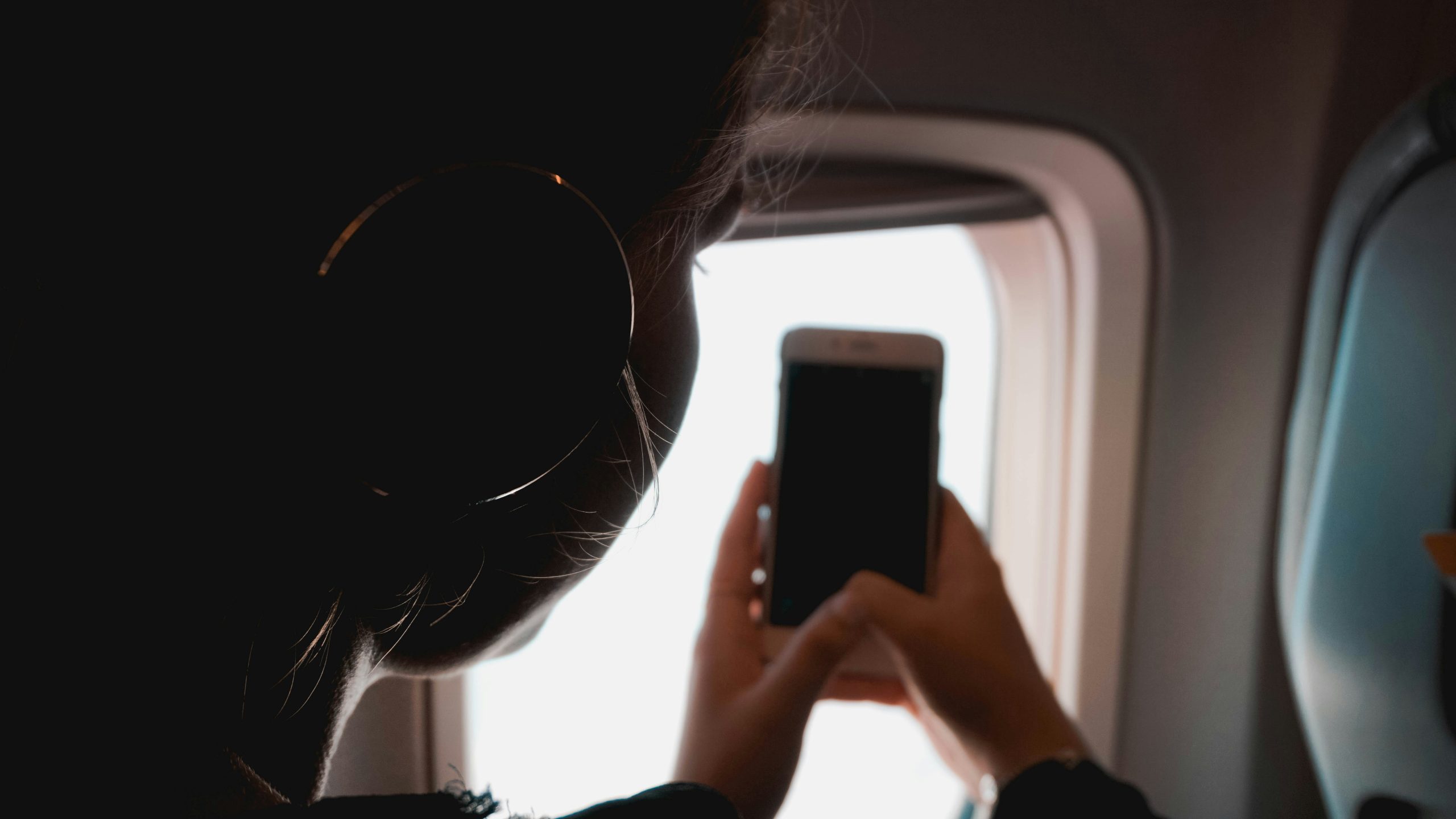
Introduction
In today’s hyper-connected world, it’s easy to assume that online streaming and instant access to content would have completely replaced offline entertainment, especially for travelers. However, despite the availability of high-speed internet and mobile data almost everywhere, offline entertainment continues to hold a special place in the hearts of globetrotters worldwide. From long-haul flights to remote nature treks, offline entertainment remains a vital companion for those on the move. But why is this old-school approach still preferred by many? Let’s dive deeper into the reasons why travelers still love offline entertainment and how it enhances the overall travel experience.
The Unpredictability of Internet Connectivity
One of the most practical reasons travelers stick to offline entertainment is the inconsistent and often unreliable nature of internet connectivity while on the road. While cities, airports, and popular tourist spots usually offer Wi-Fi or strong cellular signals, many places travelers visit do not.
Whether you’re flying at 30,000 feet, venturing into remote mountainous regions, or riding on a long-distance train, the internet can be spotty or completely unavailable. Depending solely on streaming platforms during such times can lead to frustration and boredom. Offline entertainment, on the other hand, allows travelers to download movies, TV shows, podcasts, audiobooks, or music playlists before departure. This way, no matter where they are, entertainment is ready to go, no buffering, no interruptions.
Reliable in Any Situation
When your internet connection is unstable—or non-existent—offline entertainment is a dependable alternative. Books, magazines, downloaded podcasts, and preloaded movies don’t rely on Wi-Fi or mobile data. This makes them ideal for:
- Long flights without in-flight Wi-Fi
- Road trips through rural areas
- Cruise journeys with limited satellite internet
- Train rides through tunnels or remote countryside
Types of Popular Offline Entertainment for Travelers
- Physical Books and Magazines: A paperback or travel magazine offers hours of distraction-free enjoyment. Many travelers love the tactile experience of turning pages.
- Travel Journals and Sketchbooks: Recording experiences in writing or drawings adds a personal touch to the trip and becomes a keepsake.
- Downloaded Movies and TV Shows: Streaming platforms now allow offline downloads. Having a library ready before traveling ensures entertainment without streaming costs.
- Music Playlists and Podcasts: Downloading favorite playlists or episodes before departure means you’re never without your soundtrack, even in airplane mode.
- Board Games and Card Games: Compact travel versions of chess, checkers, or a deck of cards are perfect for group trips.
- Photography Adventures: Using a camera offline to capture moments can be more satisfying than posting instantly. Editing photos later also becomes part of the enjoyment.
Cost Savings on Data Usage
Data roaming fees and limited mobile data plans can quickly become a financial drain for travelers. Streaming videos or music requires substantial data consumption, which can lead to unexpected high bills, especially when traveling internationally.
Offline entertainment eliminates the need for continuous internet access and helps users avoid these costs. Many travelers take advantage of tools like a YouTube Video Downloader to save their favorite videos for offline viewing. This is especially useful when YouTube’s offline mode isn’t available or for content not offered by streaming subscriptions. Having the content downloaded means users don’t need to worry about exceeding data limits or paying for expensive roaming charges.
Preserving Device Battery Life
Constantly streaming content not only uses data but also drains the battery much faster. This can be a real problem for travelers who don’t always have easy access to charging points, such as during long bus rides, flights, or remote camping trips.
Offline entertainment requires less processing power since the content is stored locally and doesn’t rely on real-time data transmission. This results in less battery consumption, enabling travelers to enjoy their entertainment for longer periods without worrying about finding a charger.
Freedom from Distractions and Ads
Online streaming platforms are often accompanied by ads, pop-ups, or other notifications that interrupt the viewing experience. In addition, when connected to the internet, users are constantly bombarded with notifications from social media, emails, and apps, which can detract from relaxation and enjoyment.
Offline entertainment provides a distraction-free zone. Without an internet connection, there are no ads, no buffering delays, and no notifications vying for attention. This allows travelers to immerse themselves fully in movies, series, or audiobooks, creating a more satisfying and focused entertainment experience.
Enhancing the Travel Experience
Offline entertainment offers more than just a way to pass time, it can actually enhance the travel experience in meaningful ways. Audiobooks and language learning podcasts, for example, help travelers immerse themselves in new cultures or pick up useful phrases for their destination. Curated music playlists can create the perfect mood for different parts of a trip, from energizing morning hikes to relaxing evenings in a cozy hostel.
Furthermore, without dependence on internet connectivity, travelers can enjoy entertainment at their own pace and on their own terms, whether they’re lounging in a café or waiting in long airport lines.
Versatility Across Devices and Preferences
Offline entertainment is highly versatile. Content can be downloaded onto smartphones, tablets, laptops, or dedicated e-readers, making it accessible on a variety of devices suited to different preferences. This flexibility means that travelers can tailor their entertainment options based on their mood and the type of device they prefer to use, you can visit contrank to help prepare your travel media collection effortlessly.
Additionally, many apps now allow users to download content for offline use, including popular streaming services like Netflix and Spotify, but not all content is available offline or without subscription. This is where downloading tools and alternative methods, like the YouTube Video Downloader, come in handy to fill the gaps.
Safety and Privacy Considerations
Using offline entertainment also enhances privacy and security for travelers. Public Wi-Fi networks, common in airports, cafes, and hotels, are often unsecured and pose risks of data interception or hacking. By downloading content in advance and consuming it offline, travelers reduce their exposure to these vulnerabilities.
Offline entertainment removes the need to connect to potentially unsafe networks, providing peace of mind alongside enjoyment.
Conclusion
Despite the advances in global connectivity and the rise of streaming platforms, offline entertainment remains a beloved and practical choice for many travelers. It offers reliability when internet connections falter, saves money on data costs, preserves battery life, and provides a distraction-free, immersive experience. It enhances the journey by supporting cultural learning, mood-setting, and convenience across diverse travel scenarios.
For those planning their next adventure, investing a little time in downloading favorite shows, movies, music, or audiobooks beforehand — using tools like a YouTube Video Downloader for additional offline options, can make all the difference between a tedious trip and a memorable one. Offline entertainment isn’t just a backup plan anymore; it’s a travel essential.
-
Business2 years ago
Cybersecurity Consulting Company SequelNet Provides Critical IT Support Services to Medical Billing Firm, Medical Optimum
-
Business2 years ago
Team Communication Software Transforms Operations at Finance Innovate
-
Business2 years ago
Project Management Tool Transforms Long Island Business
-
Business2 years ago
How Alleviate Poverty Utilized IPPBX’s All-in-One Solution to Transform Lives in New York City
-
health3 years ago
Breast Cancer: The Imperative Role of Mammograms in Screening and Early Detection
-
Sports3 years ago
Unstoppable Collaboration: D.C.’s Citi Open and Silicon Valley Classic Unite to Propel Women’s Tennis to New Heights
-
Art /Entertainment3 years ago
Embracing Renewal: Sizdabedar Celebrations Unite Iranians in New York’s Eisenhower Park
-
Finance3 years ago
The Benefits of Starting a Side Hustle for Financial Freedom































